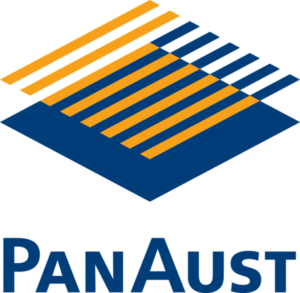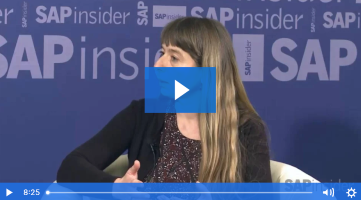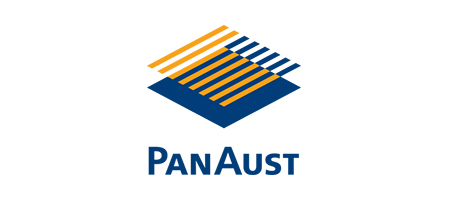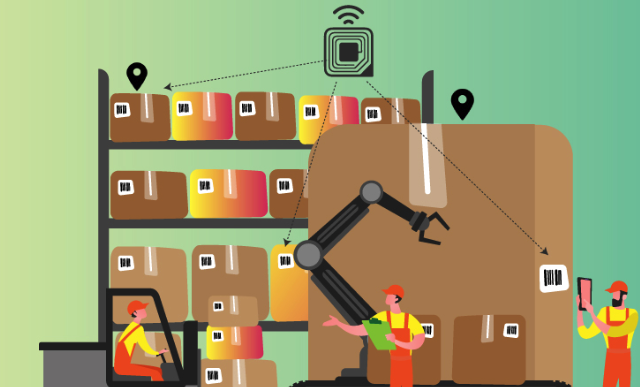PanAust Saves 500+ People Hours/Week with Digital Supply Chain Apps
SAP users across supply chain operations leverage SAP Fiori to track goods and parts
by Pierce Owen, VP of Research and Publishing
More than half (57%) of leading SAP supply chain customers — companies achieving significantly better supply chain business results than the competition — currently use supply chain mobile applications integrated with their core ERP systems, and an additional 18% have started implementing their first such app, according to SAPinsider’s Transforming the Intelligent Supply Chain research. To facilitate this application development, SAP customers can design and develop their own pre-configured and integrated scalable applications based on SAP’s user interface (UI) technology, SAP Fiori. SAPinsider recently interviewed Supply and Logistics Business Process Leader, Cindy Redwood, and Group Information Systems Manager, Steven Ivanovski, from PanAust Limited, a copper and gold producer operating primarily in Laos with headquarters in Brisbane, Australia.
This research brief shares the story of how PanAust has extended its SAP Business Suite on SAP HANA capabilities with SAP Fiori apps to track and trace parts orders, linking to third-party logistics providers (3PLs) to save significant people hours, improve reporting, and increase data accuracy.
Lack of Visibility Triggers Overwhelming Number of Inquiries
PanAust currently operates two mines in Laos with explorations ongoing in Myanmar, Papua New Guinea and Chile with over 3,500 employees, mostly in Laos and most speaking English as a second language.
PanAust selected and implemented SAP Business Suite on SAP HANA in 2012 with SAP Fiori to support the development of business applications, the first of such an implementation in Australia.
However, even after implementing SAP Business Suite on SAP HANA, the internal logistics team were not in the initial project scope and heavily relied on emails and spreadsheets to run the department. “We did not have an integrated system landscape for general freight and logistics,” shared Redwood.
PanAust works with many 3PLs, including one of Asia Pacific’s largest privately owned logistics companies. The 3PLs pick up supplies and parts from the port or airport and distribute them to PanAust’s warehouses. PanAust and its 3PLs primarily relied on spreadsheets and emails to exchange information in the Lao supply chain.
PanAust’s planners and managers had challenges pinpointing where products or parts were, when they would arrive, or if orders had been properly placed. Maintenance called supply operations whenever part stock outs occurred. Supply operations found it hard to track orders, determine when they were running late, or if someone had expedited them.
“An inordinate number of spreadsheets were being used by our logistics teams and internal groups to manage the supply chain. The lack of robust systems to support the process caused numerous data inconsistencies and frustration,” said Ivanovski.
Increased, Simplified Access to SAP ERP through SAP Fiori Saves Time and Effort
PanAust’s IT team responded to these problems by holding functional workshops with each group, including all the logistics, warehouse, and supply chain teams. They drew up an entire process of how the supply chain should work. “This spawned a bunch of projects from materials resource planning (MRP) exception reporting and purchase order (PO) confirmations to track and trace and manifesting, all of which we put into a threeyear program,” said Redwood.
PanAust decided it would not build systems specifically for 3PLs but instead put the focus on serving its own internal customers. The Company gave the 3PLs some third-party access through SAP Fiori apps in a limited way, but the IT team spent most of their time visiting each of PanAust’s sites to work with the teams to build screens and applications with them. The IT team immersed themselves within these business teams to design solutions that met their needs. “We created a fun way for them to use the solutions, and the Lao teams embraced their use,” said Redwood.
Track and trace for part orders has emerged as the most valuable application to date. Previously, the Expediting and Logistics teams received hundreds of queries each month. Now the maintenance professionals answer their own questions and can find their parts themselves. PanAust’s SAP Fiori application — the “Where’s My Stuff?” application — empowers the Operations in Laos to search for the status of goods throughout the supply chain and find the expected date of arrival. It has reduced the email queries by 3,000+ per week and has saved 500 person-hours per week. Improved efficiencies in the goods receipt process have saved an additional 27 person-hours per week.
The IT team also reduced the dependency on spreadsheets by implementing a solution to efficiently insert data from spreadsheets directly into SAP ERP. This reduced the time
needed to update and maintain spreadsheets by 30 person-hours each week.
“We built lots of prototype applications after making many trips to Laos,” said Ivanovski. “We had no big-bang implementation but instead reached minimal viable products and
continuously improved them by responding to demands and adapting very quickly. We didn’t make users wait six months for an update.”
After launching an expedited reporting app, an expediter in Laos came back to IT with a twopage list of improvements he needed. “This gave us warm fuzzy feelings as IT professionals because we could see the engagement and impact of our work,” concluded Redwood. PanAust has estimated that the SAP Fiori apps have resulted in 2,800 repurposed person-days per year and has significantly reduced stockouts since executing its three-year plan from the original workshop.
What Does This Mean for SAPinsiders?
Based on our research and the interview with Cindy Redwood and Steven Ivanovski, the following considerations can help SAP customers improve their relationship between IT, operations, and 3PLs:
- Expose 3PLs to limited parts of SAP ERP to self-serve with needed information. Before giving its 3PLs some third-party access through SAP Fiori apps, PanAust lacked the data to pinpoint if and where mistakes occurred. Once it had integrated its Operations with SAP Fiori apps, the business could see when suppliers delivered early which helped the team stick to schedules.
- Develop innovative solutions in-house whenever possible to build trust between IT and Operations. If business users do not trust IT, they start to implement technology on their own. Organizations can go out and buy more technology, but the solutions might need further customization to fit operations. PanAust’s IT team meets with Operations once a quarter to prioritize projects and extend existing technology to meet users’ needs.
- Don’t customize the core ERP system, extend it. Customizing core ERP systems can lead to many problems in management and IT maintenance and can make it difficult to upgrade. Extending ERP systems with a flexible UI such as SAP Fiori empowers organizations to customize solutions without customizing the core ERP system.
- Improve visibility and access to empower business users to self-serve. Before implementing “Where’s My Stuff?” PanAust’s logistics and warehouse professionals had limited and inaccurate views into the information they needed. The “Where’s My Stuff” app empowered them to find that information by themselves without bombarding Logistics and other teams with thousands of emails.
Following this strategic guidance should help SAP customers get the most out of SAP ERP in a way that meets the needs of their internal customers.
Make sure to download and read the full report, “Transforming the Intelligent Supply chain,” available for free for SAP customers and the general population.
Pierce Owen, VP of Research and Publishing, SAPinsider, can be reached at Pierce.Owen@wispubs.com.






